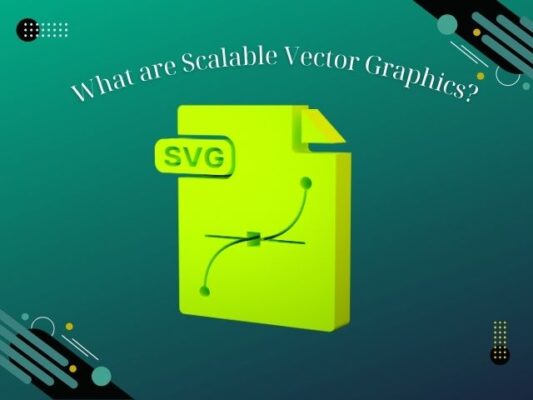Vector graphics, known as Scalable Vector Graphics (SVG), is a flexible image format utilizing vector format, distinguishing it from raster images. While raster images are composed of pixels and lose quality when resized, SVG images are constructed from mathematical equations, preserving quality when scaled up or down.
This provides the advantage of flexibility in adjusting sizes without compromising image quality. Additionally, since SVG images don’t store detailed pixel information, SVG files are lighter, speeding up webpage loading and enhancing user experience. Hence, SVG images are ideal for web applications and any scenario where flexibility and compact size are crucial factors.
Contents
What are Scalable Vector Graphics?
Scalable Vector Graphics (SVG) is an XML-based markup language that is used to describe two-dimensional vector graphics. SVG files are text-based, which means that they can be edited with any text editor. Every element and attribute in SVG files can be animated, which makes them ideal for creating interactive graphics. SVG is a W3C recommendation and integrates with other W3C standards such as the DOM and XSL.
Vector graphics allow defined areas of any shape to be assigned a colour. The shapes are described by mathematical curves (known as Bézier curves). A few sets of parameters (path points and control points) can be used to define quite complex shapes. The beauty of this approach is that the graphic can then be scaled to any size without pixellation (as the pixels are calculated from the curves at the time of rendering, at the appropriate resolution).
Mike Alexander – Repro Operator & Software Developer at Commercial Printing

Benefits of SVG Files
SVG files offer many advantages over other image formats such as JPEG and GIF. First, SVG images have the ability to be created and edited with any text editor, which greatly facilitates working with them. Second, they can be searched, indexed, scripted, and compressed, making them ideal for web applications. Third, SVG images are scalable, allowing size adjustment without losing quality. Fourth, they can be printed with high quality at any resolution. Fifth, SVG images have the ability to zoom, keeping the quality intact when resized. Finally, SVG graphics do not experience loss of quality when zoomed or resized.
Where are Scalable Vector Graphics Used?
Scalable graphics (SVG) is an animated image format and has a variety of applications. One of the most popular uses of SVG files is in the field of web design, where these gentle images are ideal for integrating into websites. This is due to their operational nature of being able to scale up or down without losing quality, which is important to ensure user experience on the underlying web platform.

SVG images are also a superior choice in mobile applications where flexibility and optimized sizing are required. The ability to adjust the size without affecting image quality is an important point when integrating into mobile applications, making them suitable for devices with many different screen sizes.

Additionally, SVG images are popular in the desktop publishing industry, where they are used to create high-quality graphics, ensuring that they retain sharpness and detail when printed. The versatility and high quality of SVG images make us an important tool in many creative and digital fields.
In addition, SVG images also have the following extension capabilities:
- Cartoon
- Embroidery
- Event promotion
- Font
- Hard copy printing (apparel, paper, etc.)
- Infographics
- Powerpoint presentation
- Landing page
- Magazine cover
Limitations of SVG Files
Although SVG files come with numerous advantages, they also entail certain limitations that should be considered. Firstly, SVG files are not suitable for use with images or complex graphics. Secondly, working with SVG files can be challenging if you are not familiar with XML markup language. Thirdly, SVG files may generate a considerable amount of intricate code. Lastly, SVG files may exhibit slow rendering, which could restrict designs by limiting the number of data points on the screen.

In conclusion, Scalable Vector Graphics (SVG) is a vector image format that is used to create two-dimensional images. SVG files are lightweight, scalable, and can be edited with any text editor. SVG images are ideal for use on the web and in mobile applications because they can be scaled up or down without losing any quality. SVG images are also used in desktop publishing, where they are used to create high-quality graphics for print. While SVG files have some limitations, they are still a popular choice for creating vector graphics.
Related Posts







